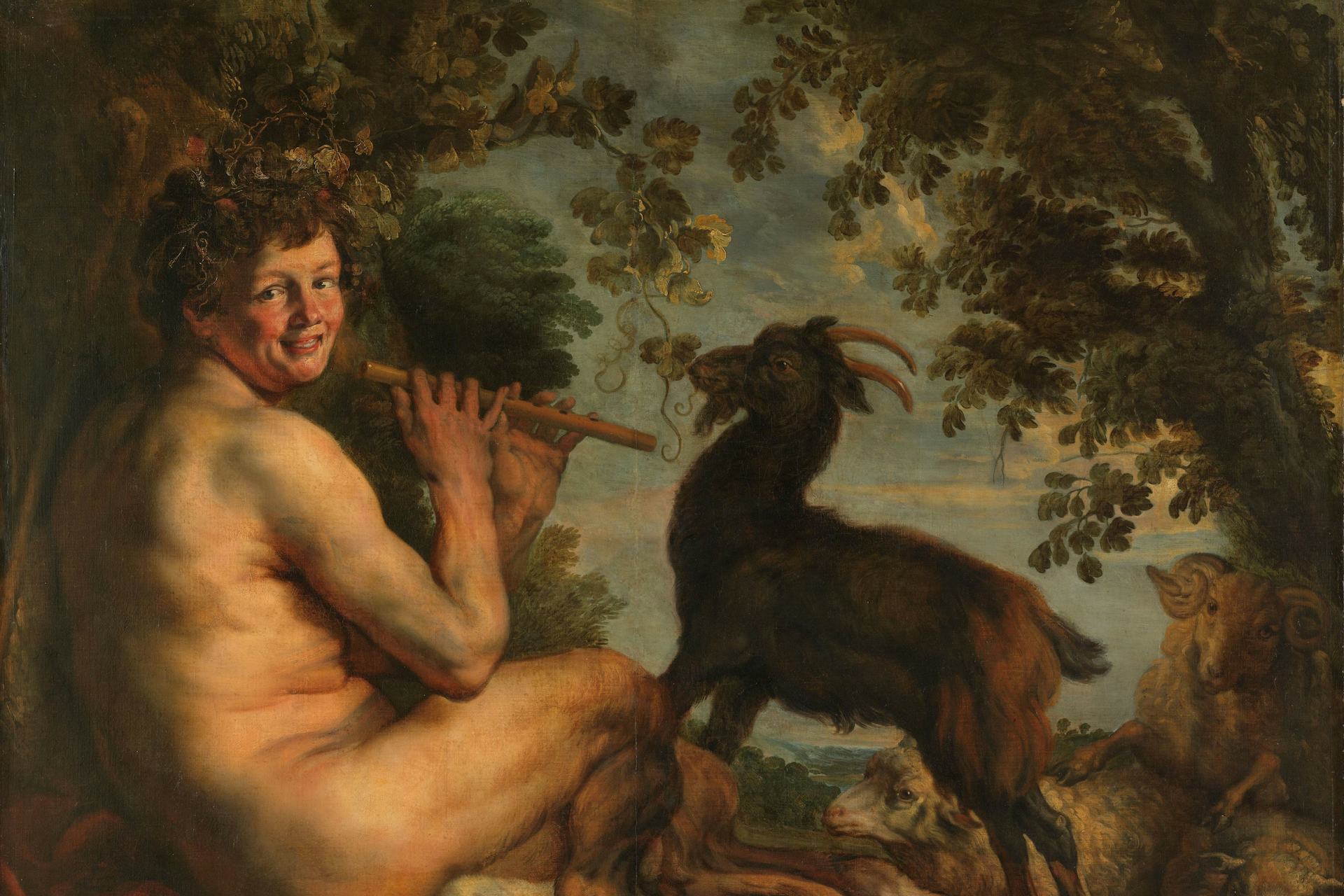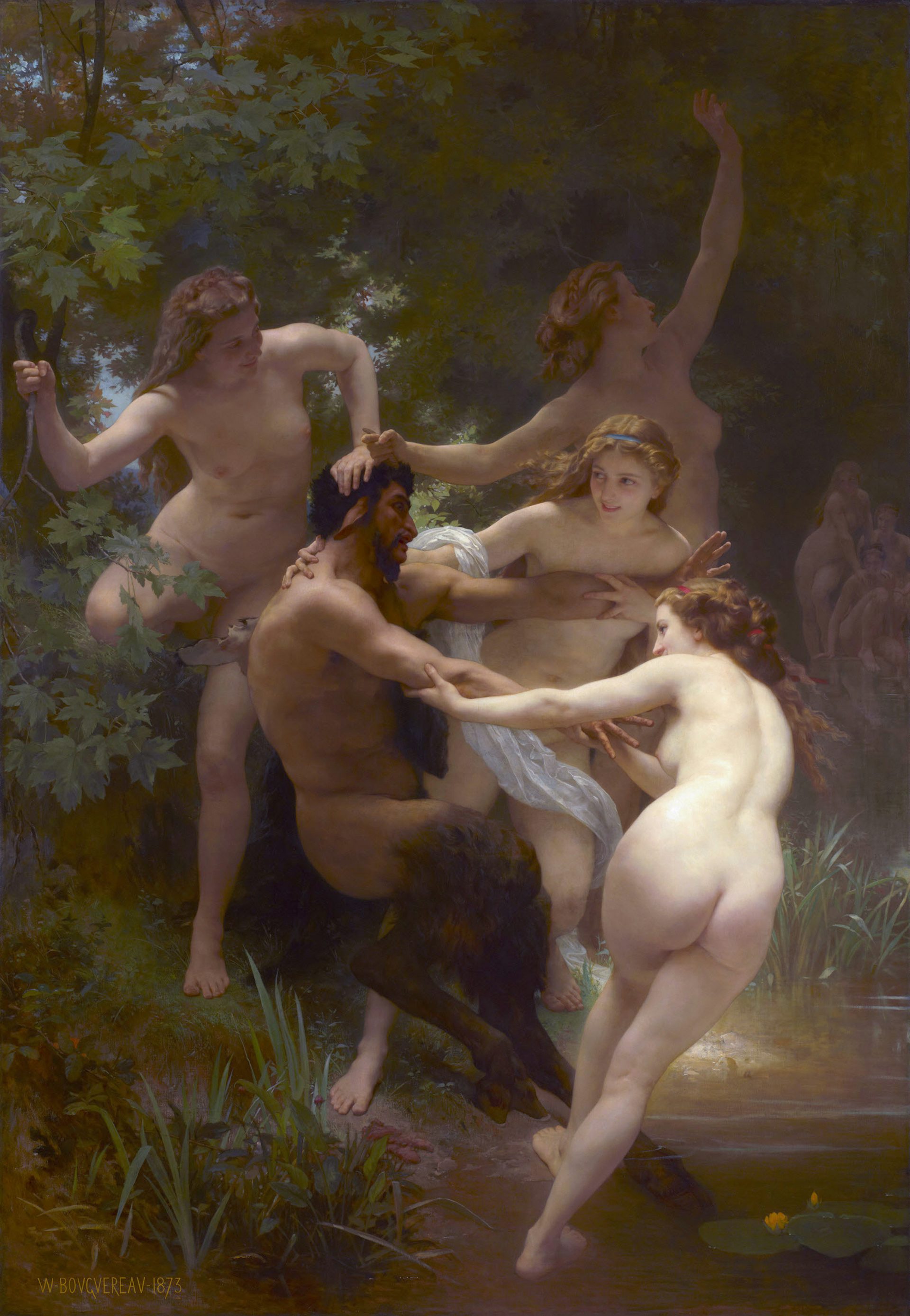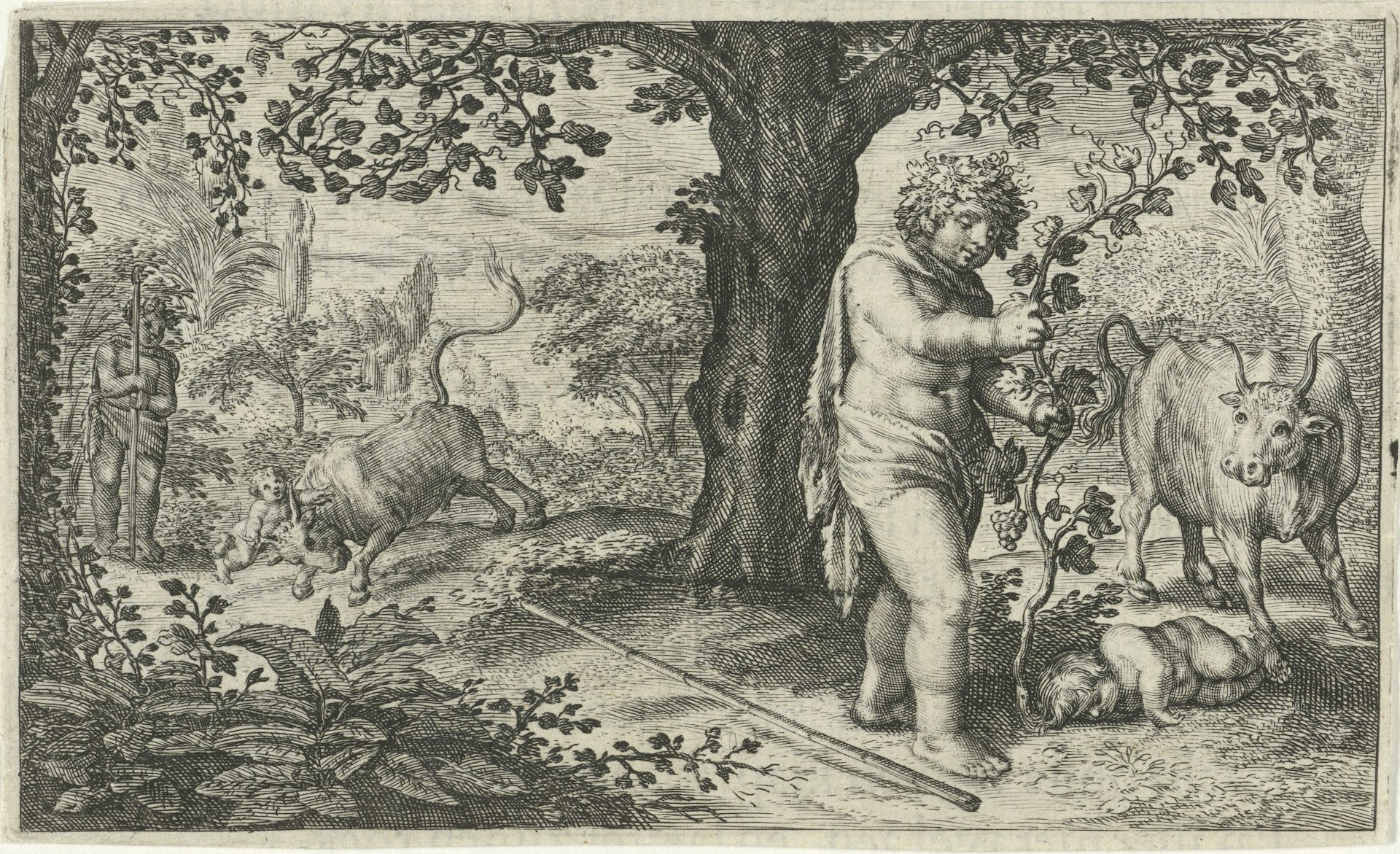Ampelus

Ampelus was unique among the satyrs for his astonishing good looks. A Satyr by Jacques Jordaens (ca. 1630–35).
RijksmuseumPublic DomainOverview
Ampelus was one of the satyrs, a race of wild, drunken creatures who combined human and horse features. But unlike most satyrs, Ampelus was extremely handsome—so much so that he was loved by the god Dionysus. He met his end either by falling from an elm tree or by being gored by a bull that he tried to ride.
Dionysus grieved bitterly for his lost lover. He named the grapevine, whose god he eventually became, after Ampelus (the Greek word for vine was ἄμπελος/ámpelos). In some versions, Dionysus also turned him into a star.
Etymology
The name “Ampelus” (Greek Ἄμπελος, translit. Ámpelos) comes from the ancient Greek word for “vine” (indeed, Ampelus was the mythical namesake of the grapevine discovered by Dionysus). However, the etymology of the Greek word ἄμπελος (ámpelos) is unknown. It is apparently not Indo-European in origin.[1]
Pronunciation
English
Greek
Ampelus Ἄμπελος (translit. Ámpelos) Phonetic
IPA
[AM-puh-luhs] /ˈæm pəˌləs/
Attributes
Ampelus could be described as either a satyr or a silen; the terms were generally interchangeable in ancient Greece. He was said to have lived somewhere in the wild lands to the east of Greece, either in Thrace (on the hills of Ismarus)[2] or in Phrygia.[3]
Like the rest of his kind, Ampelus was imagined with the ears, tail, and possibly legs and coat of a horse (though in later times, satyrs and silens were represented with goat features instead). They sometimes also had horns.

Nymphs and Satyr by William-Adolphe Bouguereau (1873).
Sterling and Francine Clark InstitutePublic DomainBut while most satyrs were rather ugly, with bald heads, scraggly hair, and snub noses, Ampelus was remarkably handsome. Nonnus describes the young satyr’s beauty in his Dionysiaca:
No dainty bloom was yet on a reddening chin, no down yet marked the snowy circles of his cheeks, the golden flower of youth: curling clusters of hair ran loose behind over his silvery-glistering shoulders, and floated in the whispering wind that lifted them with its breath. As the hair blew aside the neck showed above rising bare in the middle. Unshadowed light flashed from him, like the shining moon when she pierces a damp cloud and shows within it. From his rosy lips escaped a voice breathing honey. Spring itself shone from his limbs; where his silvery foot stept the meadow blushed with roses; if he turned his eyes, the gleam of the bright eyeballs as soft as a cow's eye was like the light of the full moon.[4]
Family
Ampelus was the son of a nymph and a satyr, though their exact names are not given in any surviving sources.[5] He never married or had any children in his short life, but he was a lover of the god Dionysus.
Family Tree
Parents
Father
Mother
- Satyr
- Nymph
Consorts
Lover
Mythology
The handsome Ampelus grew up with the young god Dionysus somewhere on the remote edges of the world. The two became very close; in fact, Ampelus was Dionysus’ first love. They spent their days playing and wrestling together in the hills and forests.
But Dionysus was hated by Hera because he was the illegitimate offspring of her husband Zeus and a mortal woman named Semele. Jealous Hera hounded Dionysus throughout his early life, seeking to destroy him (as she also did with the hero Heracles, another illegitimate son of Zeus).
In one version of the myth, Hera’s vengeful nature was the cause of Ampelus’ death. Hera, wishing to hurt Dionysus, sent the goddess Ate—the personification of madness or delusion—to goad Ampelus into trying to tame a raging bull.
As Ampelus was riding the bull, he foolishly compared himself to Selene, goddess of the moon, and the cow-drawn chariot she drove through the night. Annoyed, Selene sent a gadfly to sting the bull, who threw Ampelus and gored him to death. Ampelus’ body was then transformed into the first grapevine, which Dionysus, devastated by his lover’s death, used to make wine for the first time.[6]

Bacchus and Ampelus by Jacob_Matham after David Vinckboons (1616).
RijksmuseumPublic DomainIn another version of the myth, recounted by the Roman poet Ovid, Dionysus discovered the grapevine and its fantastic uses before Ampelus died and simply named it after him. But one day, while Ampelus was climbing a tall elm tree to gather grapes, he fell to his death. The heartbroken Dionysus placed him in the heavens as a star called Vindemitor, the “Grape-Gatherer” (known in ancient Greek as Protrygeter, the “Harvester”).[7]